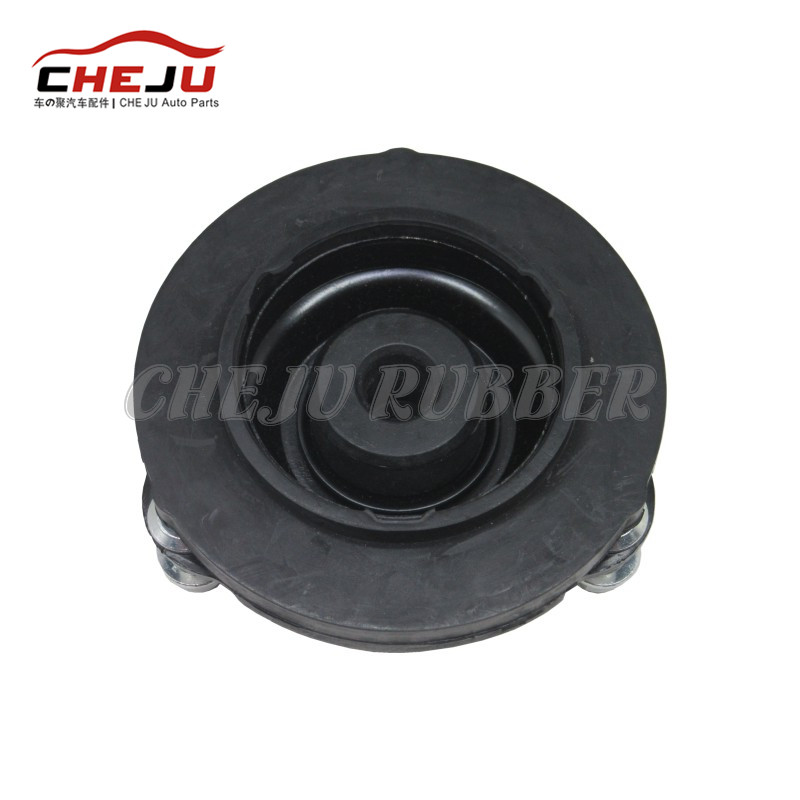Strut Mount: A Key Component in Your Vehicle’s Suspension System
2025-04-25
When it comes to vehicle suspension systems, many parts work together to provide a smooth, stable ride. One of the crucial components often overlooked is the strut mount. While it might not be as well-known as other suspension parts like shocks or springs, the strut mount plays an essential role in ensuring your vehicle’s suspension functions properly.

What Is a Strut Mount?
A strut mount is a component that connects the suspension strut to the vehicle’s body or chassis. It serves as a cushion between the strut assembly and the car frame, helping to absorb the shock and vibrations created by the road. Strut mounts are typically made from a combination of metal and rubber to provide both strength and flexibility.
The strut mount is located at the top of the strut assembly, typically near the wheel wells, and acts as a pivotal point for the suspension. It is responsible for securing the strut in place while allowing it to move and absorb shocks without affecting the overall stability of the vehicle.
Why Is the Strut Mount Important?
While the strut mount might seem like a small part, it is vital for your car’s safety, handling, and comfort. Here’s why:
- Noise and Vibration Dampening: The rubber portion of the strut mount helps to absorb road noise and vibration, ensuring a quieter and smoother ride.
- Strut Alignment: The strut mount keeps the strut in the correct position, ensuring that the alignment of the suspension is maintained. Misalignment can lead to poor handling, uneven tire wear, and compromised safety.
- Support for the Steering System: In some vehicles, the strut mount also helps support the steering system by providing a stable point of attachment for the steering linkage.
- Overall Suspension Integrity: A functioning strut mount contributes to the overall performance and longevity of the vehicle’s suspension system. Without it, other components, such as struts and springs, would be subject to excess stress and wear.
Signs of a Faulty Strut Mount
Like all vehicle parts, strut mounts don’t last forever. Over time, the rubber components can degrade due to wear, exposure to heat, and constant vibration. A faulty or damaged strut mount can cause a variety of issues. Here are some common signs to watch for:
- Clunking or Popping Noises: If you hear strange noises when driving over bumps or turning, it could indicate a damaged or worn-out strut mount.
- Rough Ride: A compromised strut mount can reduce the effectiveness of the suspension, leading to a rougher, bumpier ride.
- Steering Issues: A faulty strut mount can cause the steering to feel loose or unresponsive, affecting vehicle handling.
- Uneven Tire Wear: Misalignment caused by a damaged strut mount can lead to uneven tire wear, which can further affect the car's stability and fuel efficiency.
How to Maintain and Replace a Strut Mount
Maintaining the strut mount involves ensuring the suspension system is regularly checked during routine vehicle maintenance. If you notice any of the signs of a faulty strut mount, it’s important to have it inspected and replaced by a professional.
Replacing a strut mount is a job that often requires professional mechanics, as it involves disassembling parts of the suspension system. However, being aware of the condition of your strut mount can help you avoid costly repairs down the line.
Conclusion
The strut mount might be a small part of your vehicle’s suspension system, but it plays a crucial role in ensuring a smooth, safe, and comfortable ride. By absorbing shocks, reducing noise and vibration, and maintaining suspension alignment, strut mounts contribute significantly to the overall performance of your vehicle. Regular maintenance and prompt replacement of faulty strut mounts can help preserve the integrity of your suspension system and keep your vehicle running smoothly for years to come.


